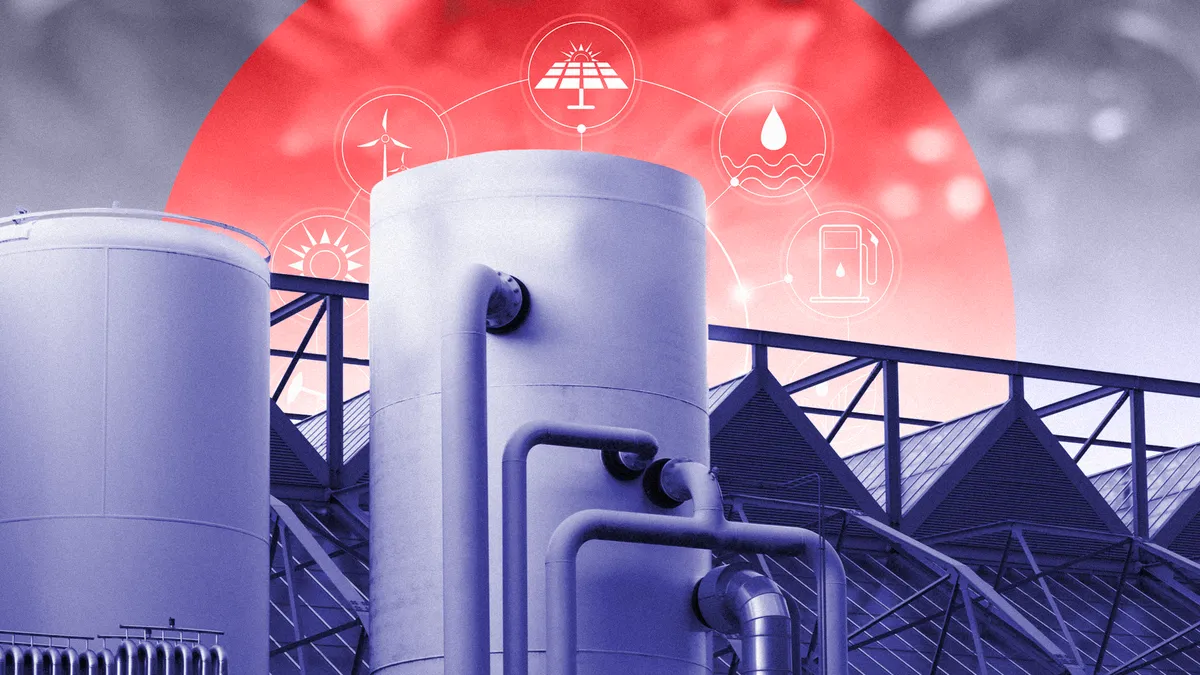Dive Brief:
- There is a growing focus on emerging battery technologies that use domestic minerals and elements because supply chain constraints are impeding lithium-ion battery storage. According to university, government and industry officials, alternate battery chemistries must and can become cost-competitive.
- To help meet growing decarbonization goals, preferred alternatives to lithium-ion need to be long-duration, with at least 10 hours of output, and have minimal or low toxicity, experts agreed at an April 1 session of MIT's 2022 Energy Conference.
- Emerging grid storage technologies in the running include sodium and iron-air batteries, ones using stacks of retired electric vehicle car batteries with considerable life remaining, and those reusing metals from recycled EV batteries.
Dive Insight:
Lithium-ion batteries are the dominant technology used for energy storage today but since the start of the war in Ukraine, the price of imported lithium has gone up twofold, said MIT professor Yang Shao-Horn. It is "now the most expensive component" in lithium-ion batteries, she told conference participants. The price of other key metals has also soared.
"This sharp increase in the cost of lithium potentially can drive other [storage] technologies and move them faster," she said, pointing to sodium-ion battery chemistries as one example. This technology is "moving rapidly," nearly matching lithium-ion's battery performance, with costs expected to be "substantially lower," Shao-Horn noted.
President Biden highlighted the need for domestically-sourced technologies March 31 when invoking the Defense Production Act to reduce reliance on foreign imports of key elements and metals used in the soaring grid battery storage and EV markets. Biden's move authorizes the Department of Defense "to support the production and processing of minerals and materials used for large capacity batteries" while ensuring "strong environmental, labor, community, and tribal consultation standards."
"You can't have high toxicity," Thomas Winter, Fluence vice president of strategic technologies, told the MIT audience,
"As costs have come down, new technologies have become unlocked," a trend that's expected to continue, Winter said. He stressed that both domestic sources of battery elements and local battery manufacturing are key. If batteries are headed to the U.S. market, they need to come from the U.S., if used in Europe, they need to come from Europe, or if used in India, they must come from India, Winter added.
Like Shao-Horn, Winter also touted the promise of sodium-ion batteries. "Solid-state batteries are exciting" because of their density and the fact that they're safer than lithium-ion, he said.
Another promising technology is metal-air chemistry, including iron-air.
If sodium and metal-air battery technologies become cost-competitive, they are superior to lithium-ion storage because they are more stable with lifetimes that are more than twice as long — 25 years compared to lithium's eight to 10 years, Lawrence Berkeley National Laboratory Senior Scientist and Division Director Robert Kostecki told Utility Dive.
Form Energy is developing a battery using iron, air and water to create what it calls "reversible rusting." Expected to be able to discharge for up to 100 hours, "the battery breathes in oxygen from the air and converts iron metal to rust," according to the company. It has been awarded federal grants from the Department of Energy's Advanced Research Projects Agency-Energy and the state of California. In late February, Form Energy signed a deal with Georgia Power for a 15 MW/1,500 MWh storage project.
Scott Burger, Form Energy senior manager, said at the April 1 MIT conference session that the company is looking at ways to buy zero-carbon iron. That includes powering production with renewably-powered green hydrogen.
Burger estimated the installation costs of iron-air batteries will be below $20 kWh, which will help the technology compete with lithium-ion batteries and also the gas-fired generation they would replace.
Other developing storage technologies include electric vehicles with grid-connected communication software that can supply power to the electric system at times of stress. Another candidate is reusing EV batteries that lack sufficient capacity for driving needs but are sufficient for energy storage.
As the transportation system gets more electrified, that represents terawatt-hours of power that can be part of our power system, said MIT's Shao-Horn.
Correction: An earlier version of this story misidentified the source of federal grants for Form Energy. They came from the Department of Energy's Advanced Research Projects Agency-Energy. In addition, the article misquoted Fluence's Thomas Winter, who used the term solid-state batteries, not salt-state. We have corrected the quote accordingly.













